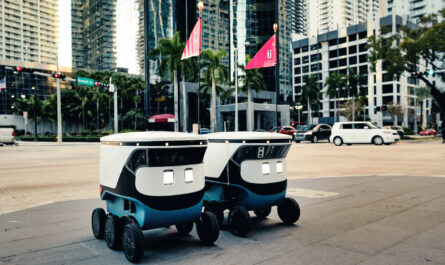Michigan Medicine researchers have engineered a human thoracic aortic aneurysm model using bioengineered vascular grafts (BVGs) and human cells, paving the way for more effective research into the disease and potential treatments for this potentially life-threatening condition, according to a recent study.
Thoracic aortic aneurysms, characterized by a weakening and bulging of the body’s largest blood vessel in the chest, often present no symptoms and require surgical repair. The condition carries a high risk of aortic dissection or rupture, which can be fatal.
Despite the availability of mouse aneurysm models for research, no medical treatments exist for thoracic aortic aneurysms. Previous drug candidates that showed promise in mouse models failed to translate to human clinical trials.
Bo Yang, M.D., Ph.D., a cardiac surgeon and a basic scientist at the University of Michigan Health Frankel Cardiovascular Center, led a team of researchers in creating the first efficient, three-dimensional model of this disease using human cells. This new approach opens a promising avenue for drug development and more effective screening to potentially prevent aortic dissection or rupture.
To create the model, the team utilized BVGs, which were generated by taking blood from patients carrying the pathogenic variant that leads to aortic aneurysms. The researchers extracted cells, reprogrammed them into induced pluripotent stem cells, and differentiated them into smooth muscle cells. These cells were then seeded onto a biodegradable scaffold and grew over eight weeks, eventually forming stable, self-supporting grafts.
Genetic mutations play a significant role in the development of thoracic aortic aneurysms. The researchers employed gene editing to manipulate the gene responsible for Loeys-Dietz Syndrome, a genetic disorder characterized by aneurysms at the aortic root.
To test the viability of the aneurysm model, the researchers used CRISPR/Cas9 gene editing to introduce the pathogenic variant in normal human cells and cause an aneurysm. They also corrected the variant in the patient’s cells and developed a healthy vascular graft as a control. The experimental and control BVGs were implanted into the carotid arteries of rats.
Over time, the bioengineered grafts carrying the aneurysm variant showed impaired mechanical properties and dilated compared to the healthy grafts. This finding validated the model’s utility and provided valuable insights into the disease mechanisms, potentially leading to the development of effective treatments for thoracic aortic aneurysms.
*Note:
1. Source: Coherent Market Insights, Public sources, Desk research
2. We have leveraged AI tools to mine information and compile it




